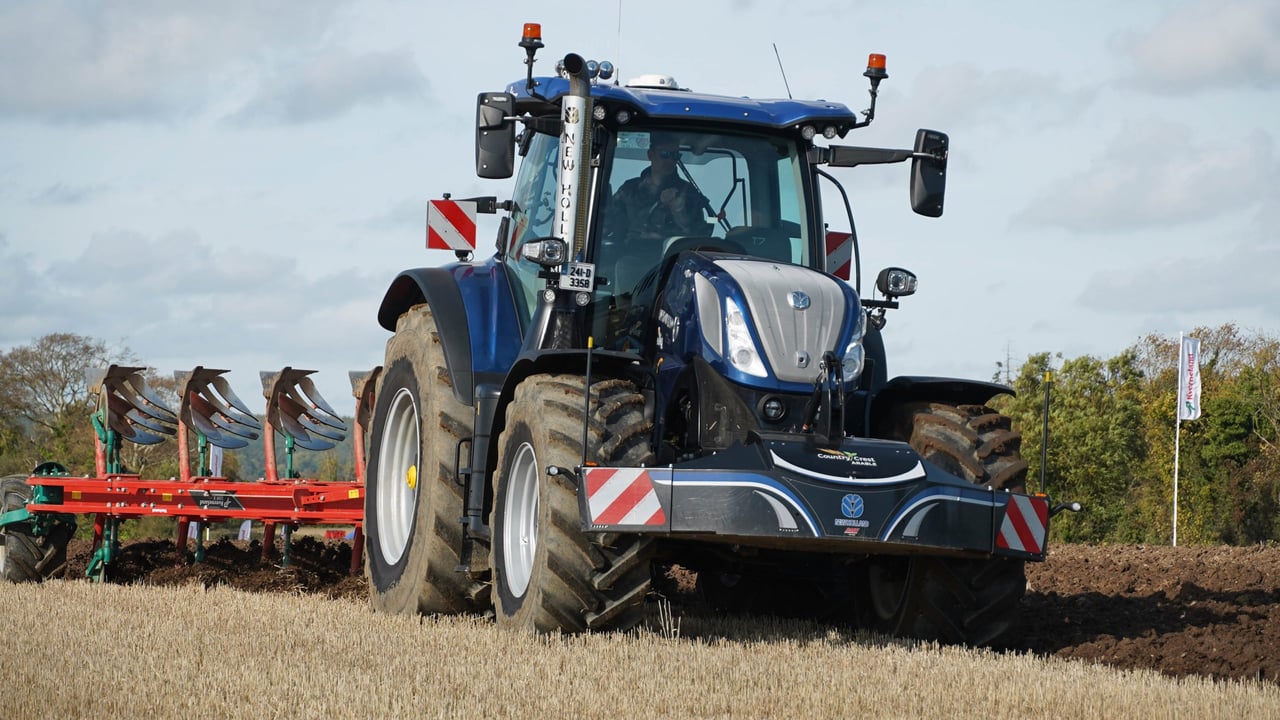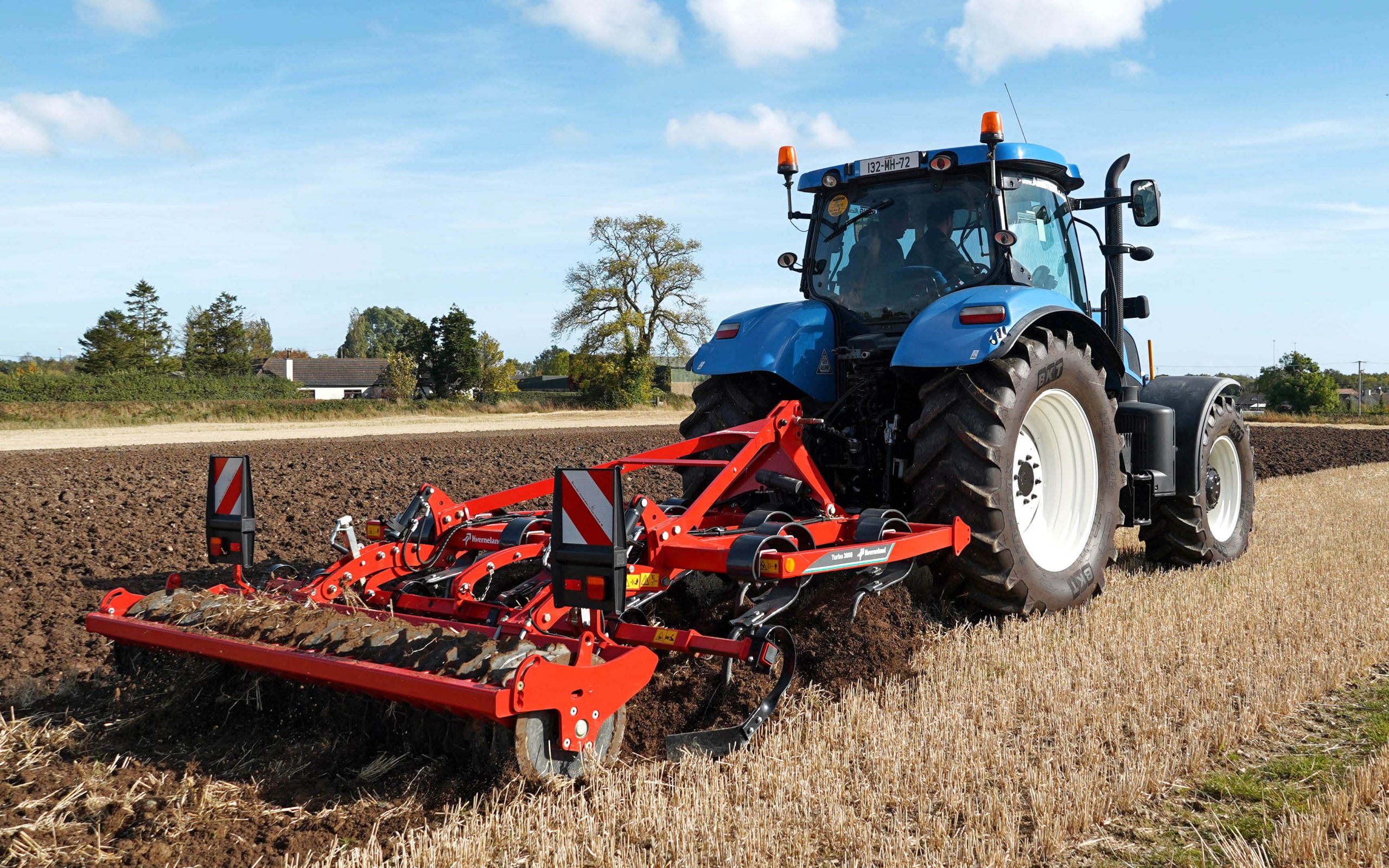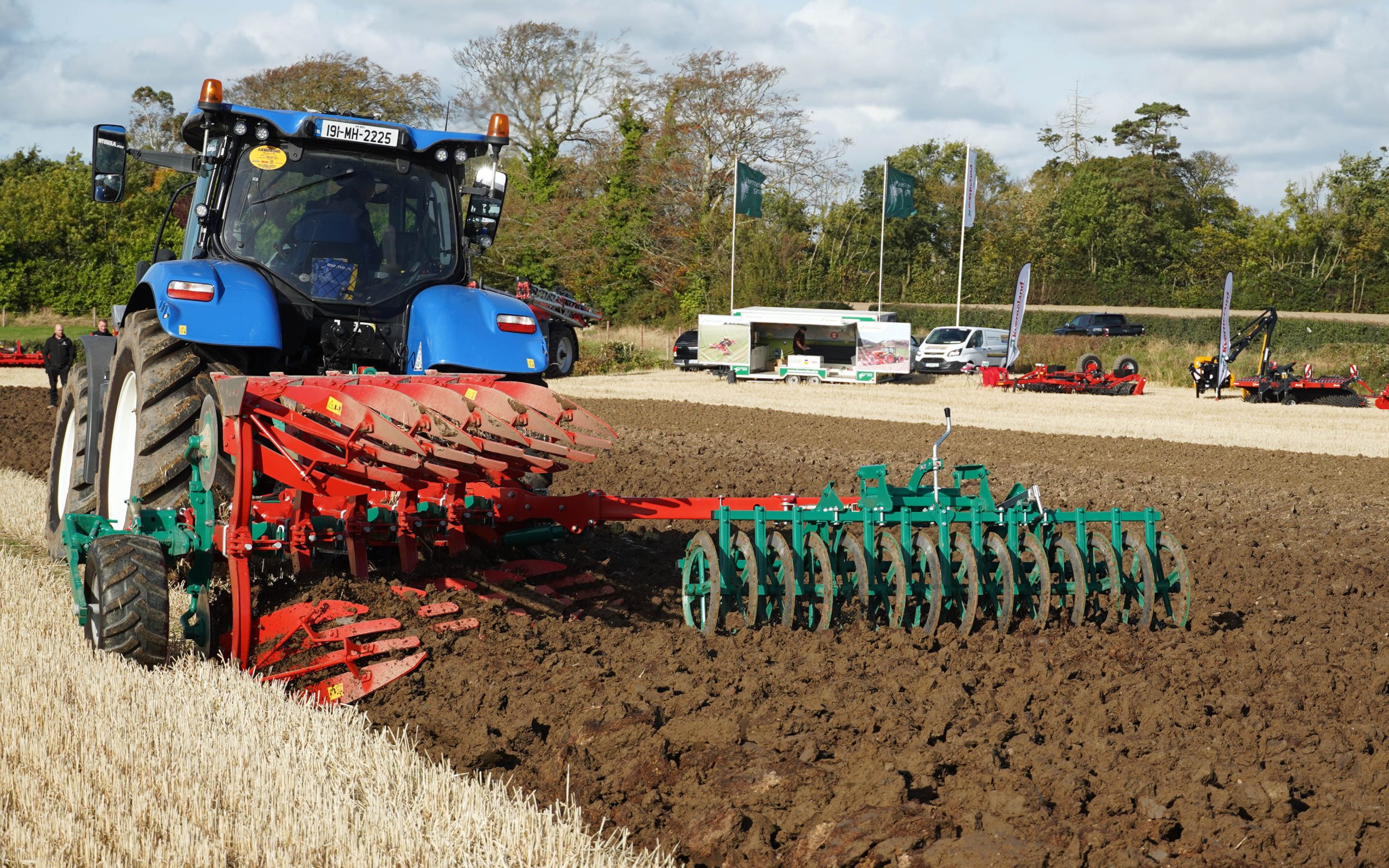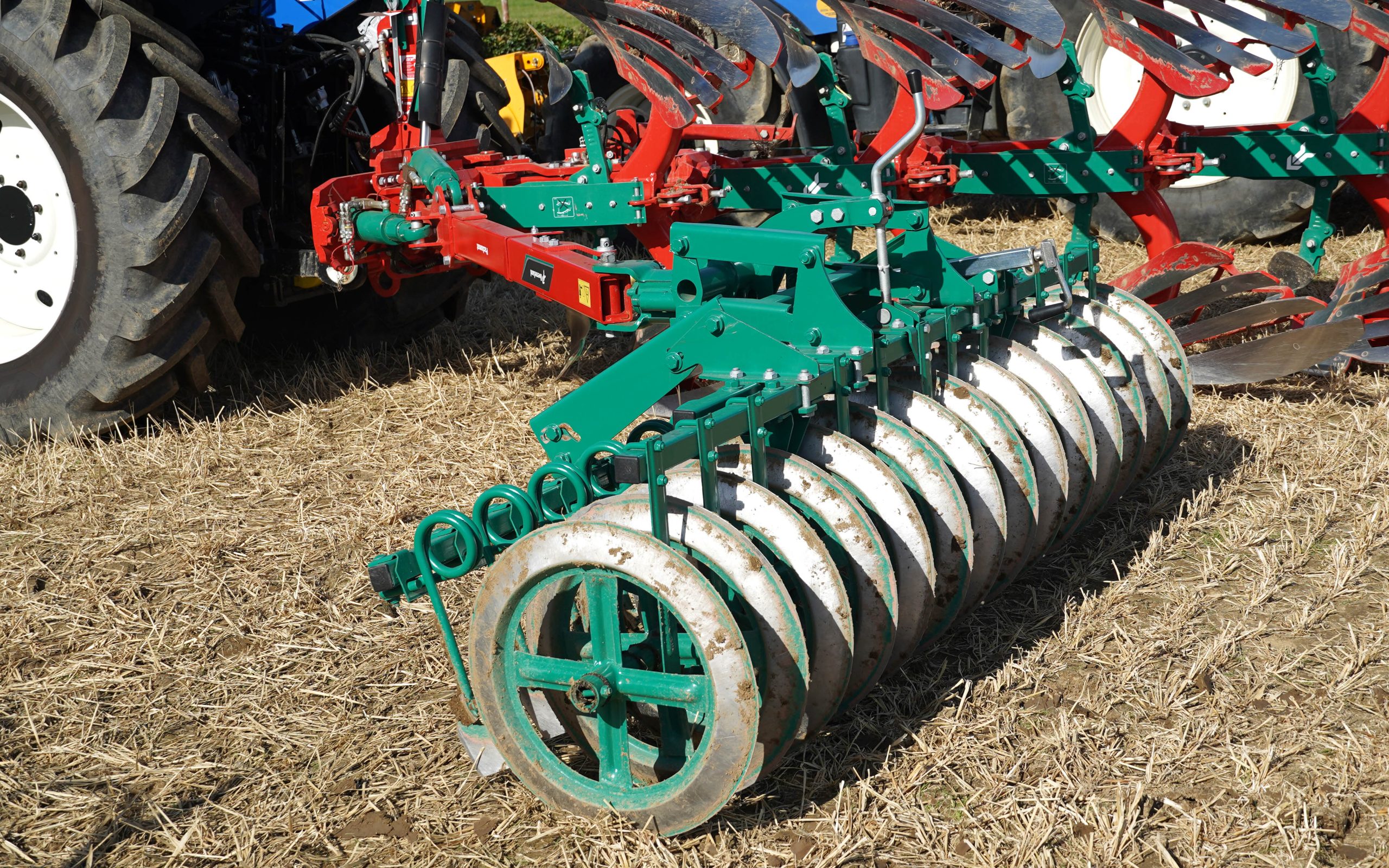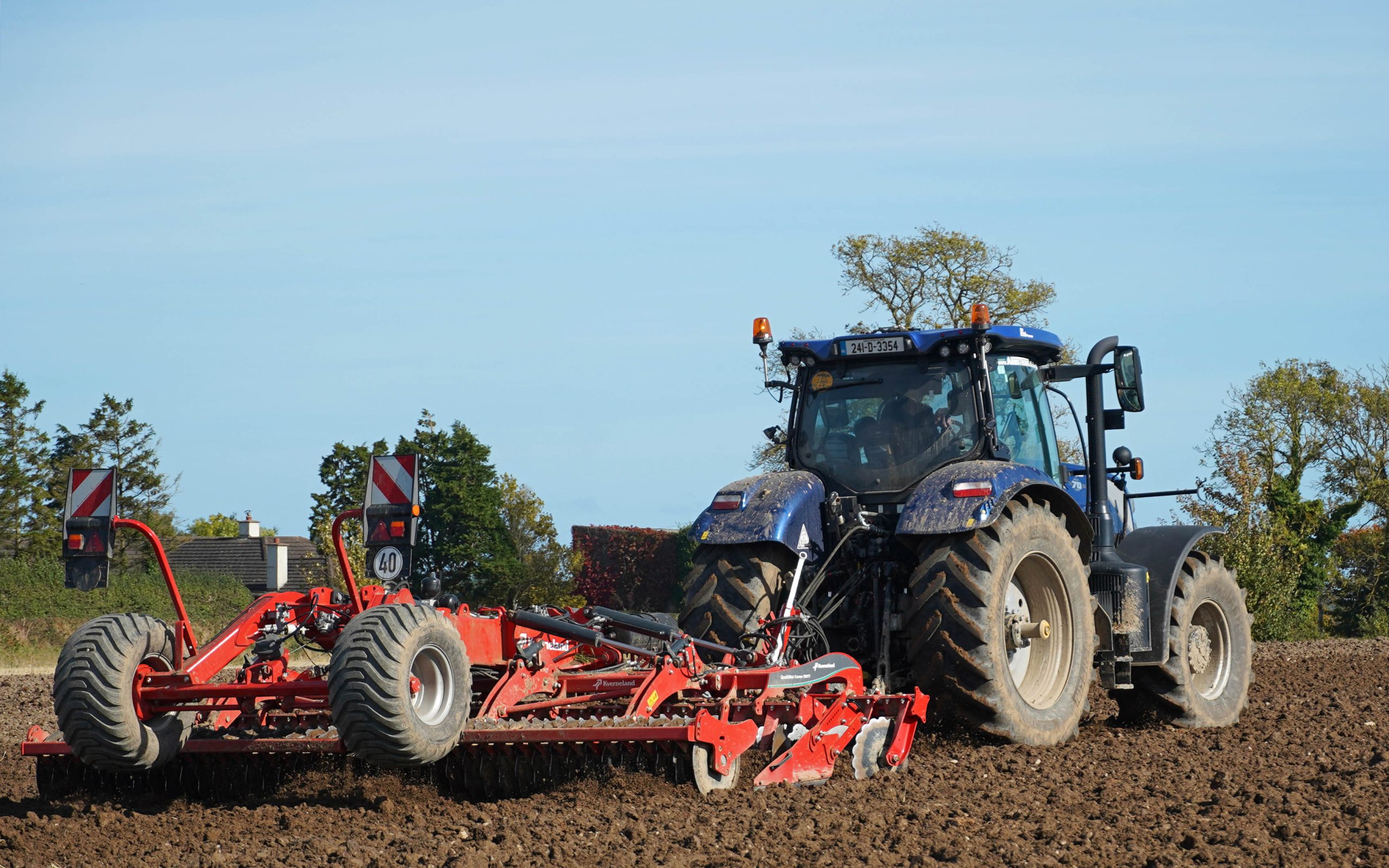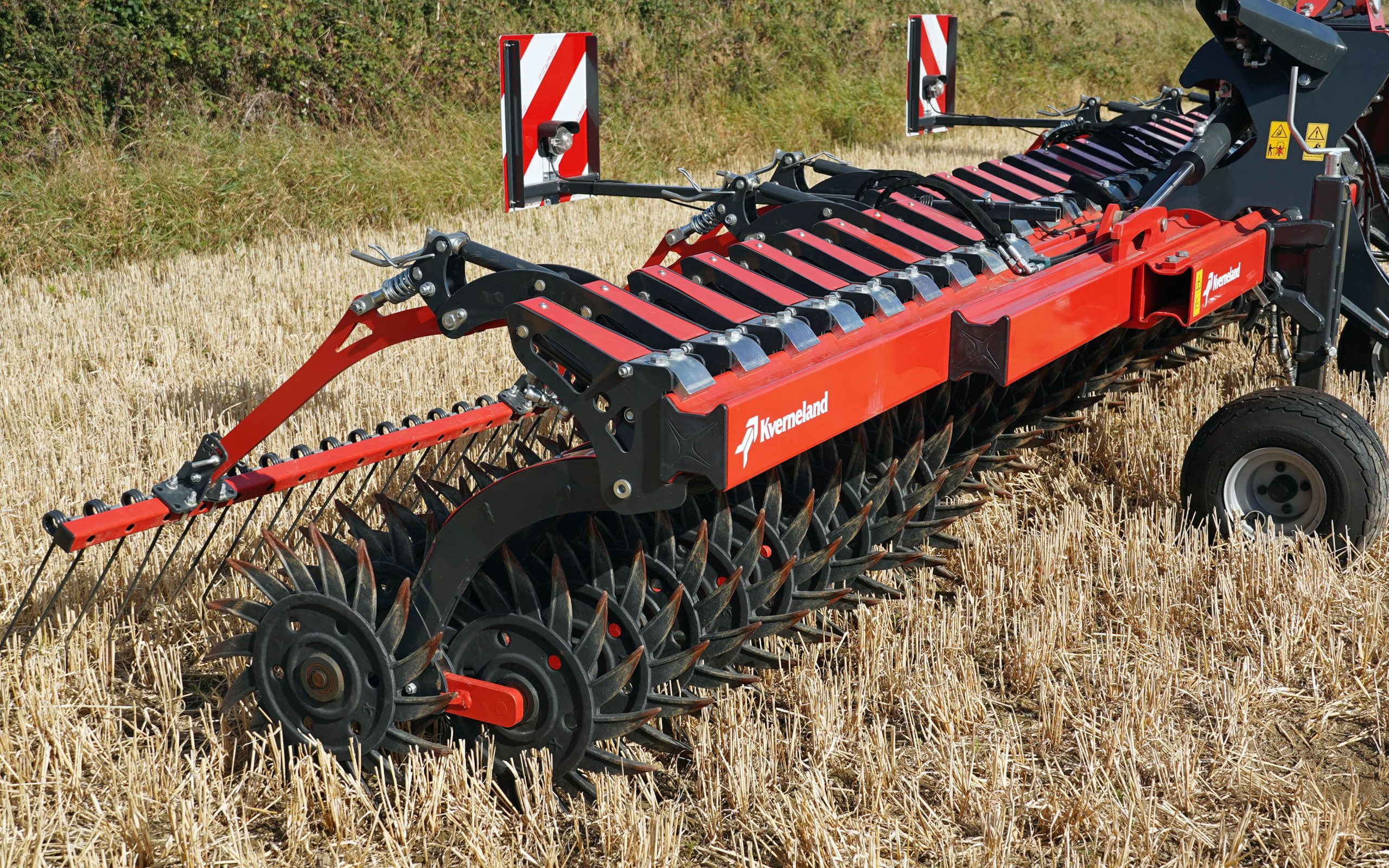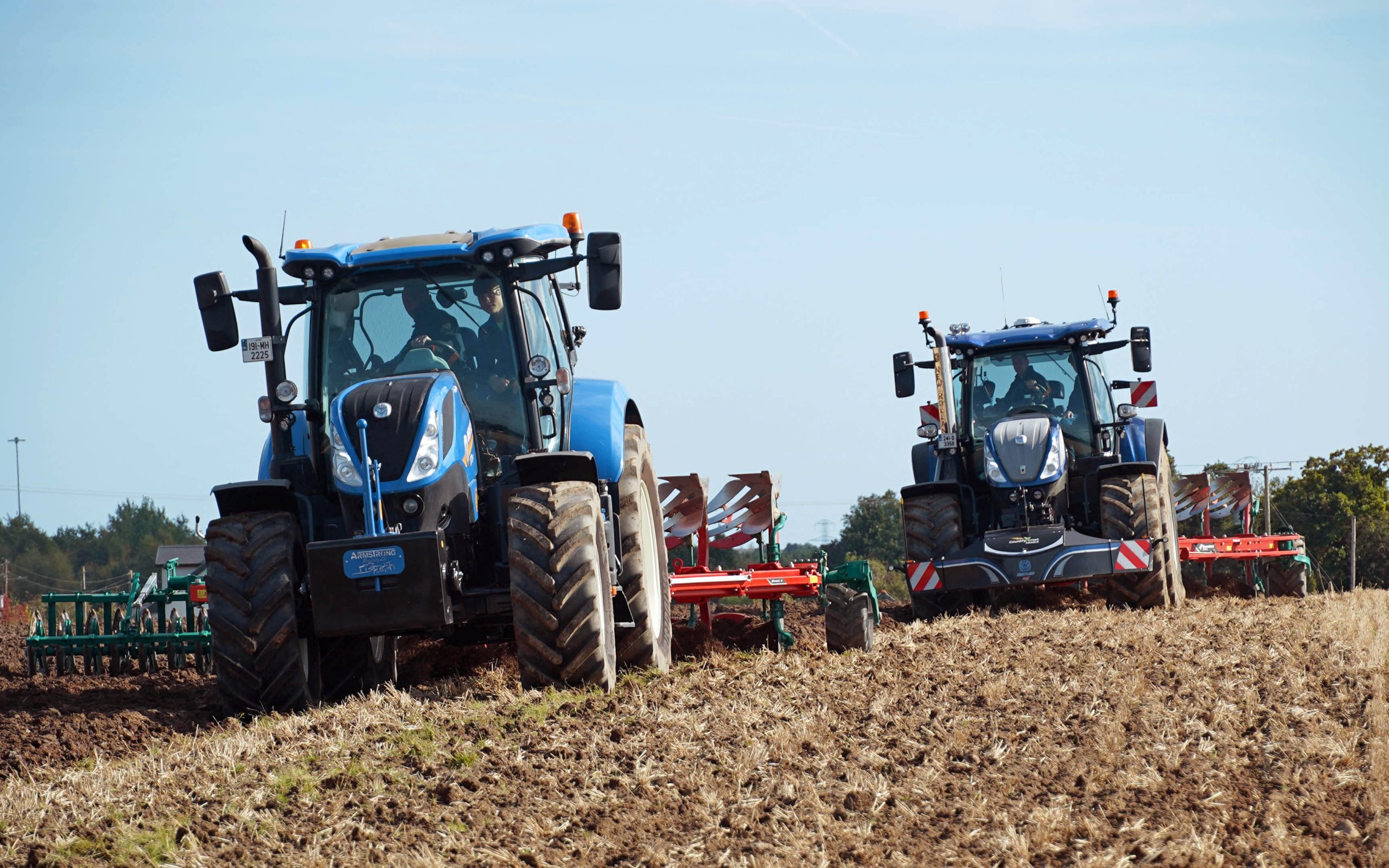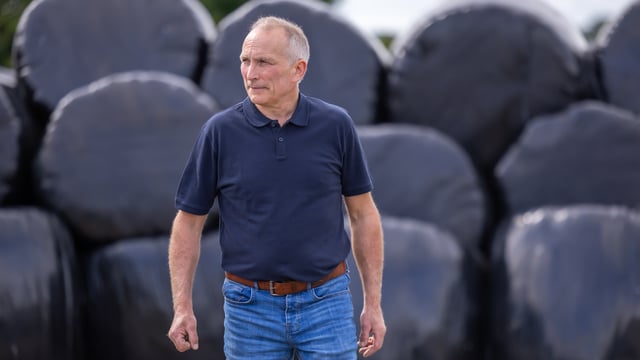Optimum conditions for Kverneland demo day
With autumn cultivations now well underway, Kverneland, in partnership with Armstrong Machinery Ltd of Lusk, Co. Dublin, held a demo day at Hayestown to showcase the latest in tillage techniques.
It was a good day for field operations, perhaps a little too good, as many potential visitors would have stayed on their own farm, getting on with the drilling or any harvesting that may have been left to do.
Yet the conditions also allowed for the machines to operate at their optimum and demonstrate just what could be done when things fell right and, just as importantly, how swiftly jobs could be accomplished.
Like a lot of live events nowadays, finding enough ground to keep the machines working is something of a challenge.
Most of the secondary cultivation equipment that was present works at speeds of between 10 and 20kph, meaning that the job will be over before there is time to appreciate the finer points of a machines operation.
Days such as this demonstrate just how effective modern equipment can be and it goes beyond well beyond just throwing more horsepower at operations, how that power is used has become the focus of much development work.
One particular example of this, is the re-emergence of the furrow press, a tool that has been around for many years and was originally a separate implement that was left standing at the end of the furrow while the tractor turned before being picked up again on the next pass.
Kverneland has now integrated it into the plough itself so that it stays with the tractor when turning, and no other arrangements have to be made for transport.
As of a necessity, the older presses needed to have two rollers to let it stand at the headland, with a press attached to the plough that no longer need apply and it enters work alongside the plough, rather than having to be drawn into the furrows.
While the effect of the press may not be as great as a dedicated set of discs, tines or a power harrow it does start the secondary cultivation process and may either eliminate a pass or reduce the the effort needed, and hence fuel used, to create the seedbed.
All this for a minimal additional draught requirement and although pulling a five furrow plough is no great shakes nowadays - the combination was working well on day, leaving no surface trash or any great clods needing further attention.
Having ploughed the ground, there is now a wide gamut of options on what to do next.
Discing is a popular choice and the 5m Qualidisc was effective in reducing the plough mould, yet what was noticeable, was the bridging of the depression left by the tractor's tyres.
With a tractor weighing around 7t running on freshly ploughed ground, this is inevitable, yet it does go to show the effect that large tractors are having on the soil and is a reminder that weight both provides traction and causes compaction.
Keeping the first tractor pass on the land is a major advantage of min-till operations and Kverneland addressed this option with a Enduro cultivator working at 30cm.
The great difference between tine cultivation and the plough is that it mixes rather than inverts, and it is inversion which gives greater weed control, although a deep tine will aerate the soil and is less likely to produce a pan.
The Kverneland implement is a solidly built unit and was leaving a level surface behind it with the sprung tines having a shattering effect, although there was a degree of trash left at the surface, which might interfere with the drilling.
The organic community has turned 180° on cultivation, at one time it heavily relied on the plough to control weeds, but that thinking has changed over the years and the emphasis is now on preserving the soil structure.
The holy grail is finding methods of weed control that do not rely on heavy cultivations or chemicals and to this end Kverneland has introduced the Helios mechanical weeder which relies purely on disturbing the weeds within an established crop to work.
The implement has gained much publicity but actually setting it loose in a crop requires a huge leap in faith as the recommended method of operation is to set off at a 15° angle to the rows.
Few in Ireland have summoned up the courage, but one who cannot praise it highly enough according to Conor Vaughan of Kverneland.
Apparently, the farmer concerned reports a significant difference in the crop appearance after use although few other details are presently available.
Despite the often reported downturn in machinery sales this year, Philip English, managing director of Kverneland Ireland, reports a satisfactory year given the circumstances with a projected income on a par with last year.
It was the first quarter which was the quietist and spooked many in the trade he believes, but then trade picked up in Q2 and Q3 with the anticipation that overall it will not be as bad as year as many were forecasting, certainly not for Kverneland.
Looking forward, English said that the company has a good bank of orders for 2025, with dealers having the confidence to carry stock once again, and that is the true test of the market.
However, next year turns out the company has been busy developing the product range and we are promised a good spread of new machines in the run up to Agritechnica.

